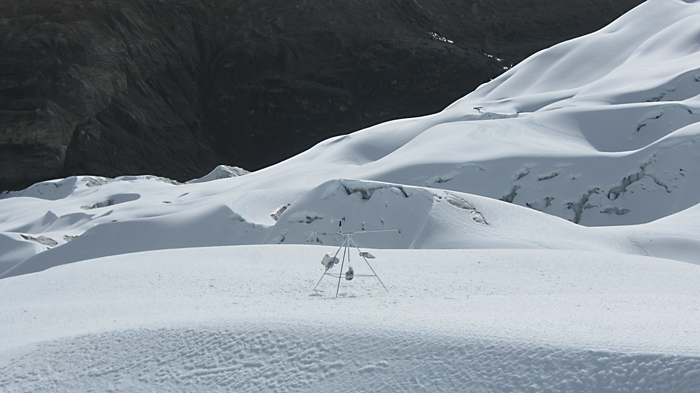


The water supplied by melting glaciers in the high Andes mountains is critical to many towns and cities in that region. Because some of these glaciers appear to be retreating and shrinking, the Community of Andean Nations established the Project on Adaptation to the Impact of Rapid Glacier Retreat in the Tropical Andes (known as PRAA). The project will establish a network of eight measurement stations, all at elevations greater than 4,000 m (13,100 ft), to be installed in Bolivia, Colombia, Ecuador, and Peru.
These stations are being acquired by the PRAA as part of the project’s goal to generate knowledge about glacial retreat and high mountain hydrology. The main objective of the station installations is to monitor the behavior of glaciers through radiation and temperature data to determine how much life is left in them. It is hoped that this will allow better water resource management in basins that depend mainly on the melting of glaciers as support for their economy.
Considering the uncertainties of climate change, it is difficult to calculate models of the glaciers’ life span by just watching them. So the need arose to install meteorological stations on the glaciers themselves, in an area that would best represent the glaciers’ behavior and condition.
The station described here was installed on a glacier in the snow-capped Quisoquipina mountains, near Ausangate peak, part of the Vilcanota mountain range near Cuzco, Peru. EnviroEquip oversaw the installation.
To install the station, the researchers had to wait for the best time of year, when it was not too cold and there weren’t too many storms, as the glacier is quite inaccessible and dangerous for most of the year. The only way to get to the installation site is on foot; it took approximately five hours of uphill climbing to get to the site. To make the climb, the installers had to use specialized equipment for mountains and snow. The camp had to be located away from the glacier to avoid the cold generated by it; nevertheless, the temperature at night dropped to -10°C.
The station consists of a CR1000 datalogger, temperature and humidity sensors, and a precipitation gage, all from Campbell Scientific and all powered by a solar panel.
Significantly, the station has a Campbell GPS (in addition to the meteorological instruments) that can determine the movement experienced by the glacier each year. The station also has a snow-level sensor to determine the amount of annual snowfall on the glacier. This data may help create a better picture of glacier behavior and thus get closer to the data needed to determine the life expectancy of the glacier. The station was mounted on an aluminum tripod the researchers manufactured, with a special balancing system so the instrumented portion of the tripod is always maintained level, even when the glacier moves.
The entities involved in the installation of the station were the following: the National Meteorology and Hydrology Service (SENAMHI), Glaciology and Water Resources unit of the National Water Authority (ANA), and trained EnviroEquip personnel, who supervised the project.
Case Study Summary
Application
冰川莫nitoringLocation
Andes Mountains, Peru产品Used
CR1000Contributors
EnviroEquipParticipating Organizations
Community of Andean Nations, National Meteorology and Hydrology Service (SENAMHI), Glaciology and Water Resources unit of the National Water Authority (ANA)Measured Parameters
冰川莫vement, air temperature, humidity, barometric pressure, solar radiation, precipitation, snow depthView the PDF